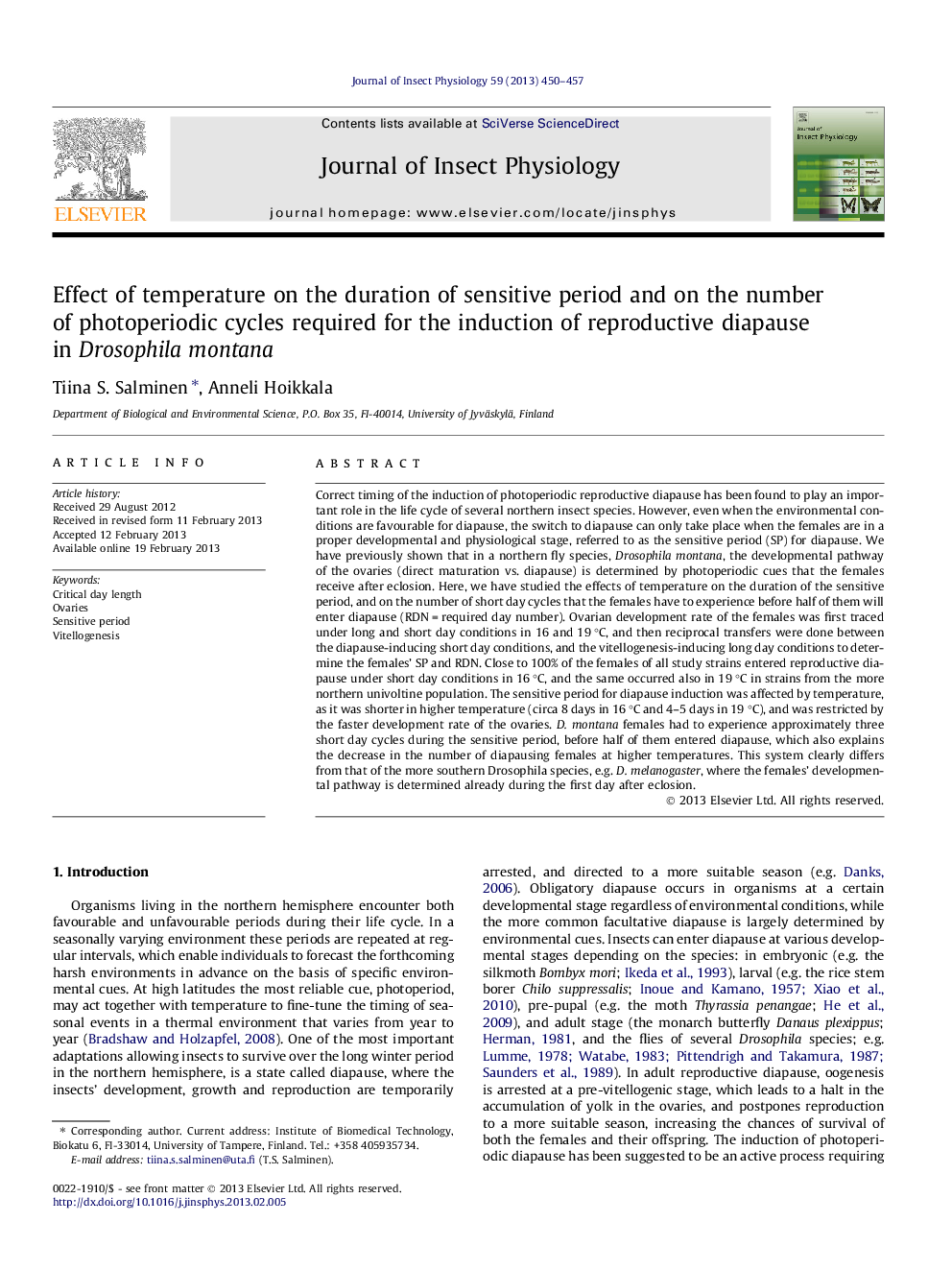| کد مقاله | کد نشریه | سال انتشار | مقاله انگلیسی | نسخه تمام متن |
|---|---|---|---|---|
| 5921910 | 1165337 | 2013 | 8 صفحه PDF | دانلود رایگان |

Correct timing of the induction of photoperiodic reproductive diapause has been found to play an important role in the life cycle of several northern insect species. However, even when the environmental conditions are favourable for diapause, the switch to diapause can only take place when the females are in a proper developmental and physiological stage, referred to as the sensitive period (SP) for diapause. We have previously shown that in a northern fly species, Drosophila montana, the developmental pathway of the ovaries (direct maturation vs. diapause) is determined by photoperiodic cues that the females receive after eclosion. Here, we have studied the effects of temperature on the duration of the sensitive period, and on the number of short day cycles that the females have to experience before half of them will enter diapause (RDN = required day number). Ovarian development rate of the females was first traced under long and short day conditions in 16 and 19 °C, and then reciprocal transfers were done between the diapause-inducing short day conditions, and the vitellogenesis-inducing long day conditions to determine the females' SP and RDN. Close to 100% of the females of all study strains entered reproductive diapause under short day conditions in 16 °C, and the same occurred also in 19 °C in strains from the more northern univoltine population. The sensitive period for diapause induction was affected by temperature, as it was shorter in higher temperature (circa 8 days in 16 °C and 4-5 days in 19 °C), and was restricted by the faster development rate of the ovaries. D. montana females had to experience approximately three short day cycles during the sensitive period, before half of them entered diapause, which also explains the decrease in the number of diapausing females at higher temperatures. This system clearly differs from that of the more southern Drosophila species, e.g. D. melanogaster, where the females' developmental pathway is determined already during the first day after eclosion.
Highlights⺠Correct timing of reproductive diapause is crucial for northern insects. ⺠Sensitive period for induction of diapause is temperature dependent. ⺠Sensitive period is shorter at higher temperatures. ⺠Number of days required for diapause induction is temperature compensated.
Journal: Journal of Insect Physiology - Volume 59, Issue 4, April 2013, Pages 450-457